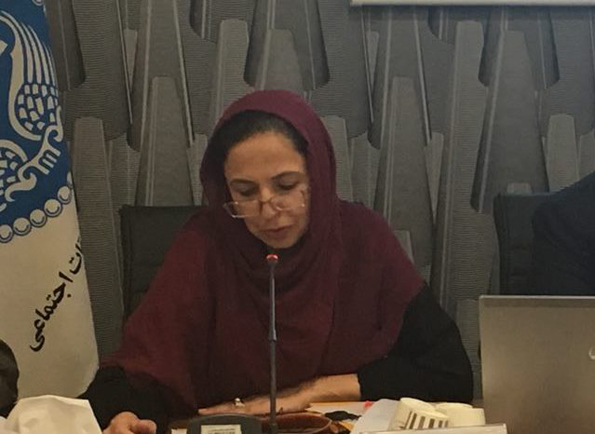Launching Ceremony of Population Situation Analysis of I.R. of Iran

On 10th July 2016 Population Situation Analysis (PSA) of I.R. Iran was launched in the University of Tehran (UT) with participation of high level officials and heads of several UN agencies. PSA is prepared and published jointly by the Demography Department of the University of Tehran, Institute of National Population Studies & Comprehensive Management, National Institute of Health Research and United Nations Population Fund (UNFPA), AVA Diplomatic reports.
The report addresses several population issues including population policies, fertility and mortality, marriage and divorce trends, changing age structure, youth bulge, upcoming population ageing, national and international migration as well as population and environmental issues with the aim of informing policies and plans.
Dr. H. Mahmoudian, Demography Professor of UT and the National Project Director of UNFPA joint project, opened the ceremony by acknowledging the efforts of the team of experts and scholars, involved in preparation of PSA during the past year. Dr. J.Abbassi, the renowned demographer, was lauded for leading the team of experts.
Dr. M. El-Adawy, UNFPA Representative in I. R. of Iran extended sincere gratitude to Dr. J. Abbassi and his team for compilation of such a valuable report which is essential for decision and policy makers at this stage. She highlighted that the general population decree by His Eminence the Supreme Leader of I.R. of Iran has paved the way for addressing population issues – both quantitative and qualitative – and added that it is evident that successful implementation of the population decree requires adequate knowledge of demographic transitions, in which PSA is one of the best tools available. Dr. El-Adawy noted that Iran has had remarkable achievements in many areas in the region and now it is time to use its full population potential to reap the demographic dividend by developing evidence-based policies and action plans.
Dr. A. Azar, Head of the Statistical Centre of Iran provided a comprehensive report of the activities and achievements of the Population Committee of the 6th National Development plan (NDP). As the Chair of the Committee, he recognised the importance of the PSA and how the results could be used for planning and manifesting Iran’s full potential in line with the general population decree. Dr. A. Azar reiterated on fact that Iran is at a golden age with regards to population and listed some of the population challenges in his presentation.
Dr. J. Abbasi, the PSA team leader explained that considering the attention of decision- and policy-makers as well as public to the population issues created the great demand for preparation of a comprehensive population situation analysis based on scientific data and information. Dr. J. Abbassi, noted that PSA aims to explore demographic trends, provide comprehensive knowledge about various aspects of population dynamics, and present a realistic image about the current situation and future population trends in the country whilst suggesting appropriate policy recommendations. Dr. J. Abbassi briefly explained the highlights of each eight chapters.
The event continued by two technical presentations elaborating some of the important elements of PSA. The first presentation was given by Dr. G. A. Farjadi, Deputy Research of Management & Planning Research Institute in which he elaborated on the economic implications of population trends unemployment issues in Iran. He highlighted on how population can be the cause and effect of development. Dr. M. Khosheshi, Head of Demography Department of UT provided a comprehensive presentation on the changes in age structure and its implications on the population of Iran.
Mr. G. Lewis, United Nations Resident Coordinator in Iran, took the floor and complemented those involved in preparation of the PSA. He praised Iran’s tremendous progress during the last decade and the recognitions received. Mr. Lewis noted that as one of the 139 signatories of the Sustainable Development Goals (SDGs), Iran has a lot to offer while reaffirming the commitment of all eighteen United Nations agencies present in Iran to support realisation of the SDGs. He closed his remarks by stating that it is UNFPA’s organizational mandate to deliver a world where every pregnancy is wanted every childbirth is safe and every young person’s potential is fulfilled. – Because everyone counts.
Ms. Molawerdi Ms. S. Moulawerdi, Vice President and the Head of Deputy for Women & Family Affairs, concluded the meeting by reinforcing the importance of addressing population issues. She reiterated the need to have right policies, plans, and most importantly coordination among all stakeholders to help the country utilize its full potential and in order to reach sustainable development. Ms. Moulawerdi referred to article 14 of the Population Decree i.e. continuous monitoring of population policies, which can be achieved through the establishment of appropriate mechanisms. She also highlighted on the need to use other countries experiences to develop a contextual holistic and comprehensive plan to address the population issues.

